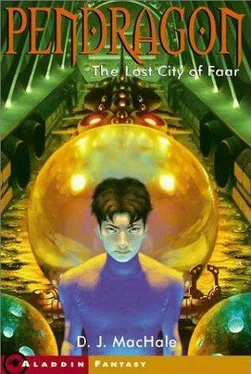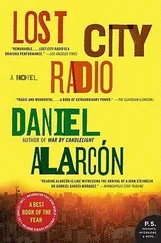D. MacHale - The Lost City of Faar
Здесь есть возможность читать онлайн «D. MacHale - The Lost City of Faar» весь текст электронной книги совершенно бесплатно (целиком полную версию без сокращений). В некоторых случаях можно слушать аудио, скачать через торрент в формате fb2 и присутствует краткое содержание. Жанр: Фантастика и фэнтези, на английском языке. Описание произведения, (предисловие) а так же отзывы посетителей доступны на портале библиотеки ЛибКат.
- Название:The Lost City of Faar
- Автор:
- Жанр:
- Год:неизвестен
- ISBN:нет данных
- Рейтинг книги:4 / 5. Голосов: 1
-
Избранное:Добавить в избранное
- Отзывы:
-
Ваша оценка:
- 80
- 1
- 2
- 3
- 4
- 5
The Lost City of Faar: краткое содержание, описание и аннотация
Предлагаем к чтению аннотацию, описание, краткое содержание или предисловие (зависит от того, что написал сам автор книги «The Lost City of Faar»). Если вы не нашли необходимую информацию о книге — напишите в комментариях, мы постараемся отыскать её.
The Lost City of Faar — читать онлайн бесплатно полную книгу (весь текст) целиком
Ниже представлен текст книги, разбитый по страницам. Система сохранения места последней прочитанной страницы, позволяет с удобством читать онлайн бесплатно книгу «The Lost City of Faar», без необходимости каждый раз заново искать на чём Вы остановились. Поставьте закладку, и сможете в любой момент перейти на страницу, на которой закончили чтение.
Интервал:
Закладка:
They hung their swim skins on hooks and then put on these soft, white tunics that had a little bit of an ancient Roman feel. These gowns pulled down over their heads and went to above their knees. They tied them tightly at the waist with pieces of cloth that varied in color from rich green to deep red. Nobody wore shoes, not even sandals.
As Kalaloo led us past them, many of the people smiled and welcomed us.
I said “hi” back as many times as I could. I wanted to show them that I was cool too. It got to the point where I was walking backward to keep eye contact with them. I kept walking backward until I walked right into Uncle Press.
“Oops, sorry, didn’t mean to — ” I turned around and froze. The words caught in my throat. That’s because I had just gotten my first glimpse of the Lost City of Faar. Or maybe I should call it the Found City of Faar. Maybe I’ll just call it Faar. Or maybe I’ll just call it… phenomenal.
Where should I start? Yet again, I was about to enter an entirely new and amazing place. I had to keep telling myself that according to legend it once existed on the surface. If that were true, then this city would be plenty cool. But when you factor in that we were sitting hundreds of feet below the ocean — well, then it became unbelievable.
As strange as this may sound, I was looking out at a rocky mountain. I know, that’s impossible, but that’s what it was. The city was built into and around the craggy ledges of a small mountain. The mouth of the tunnel was closer to the top than the bottom so we were actually looking down at most of Faar.
The city had an ancient feel to it. There were no modern buildings, no cars, and no sign of technology anywhere. But there were plenty of birds. Can you believe it? Birds were flying in this underwater cavern!
The buildings had an ancient Greek look with marble staircases that led up to the columned entryways of domed structures. They were perched all over this craggy mountain and ranged in size from huge, impressive monuments like you’d see in Washington, D.C., to small simple stone houses made of whitewashed stucco. I saw many Faarians strolling along gentle pathways that snaked in and around and up and down and everywhere in between. There were beautiful, hanging vines draped over most of the city and several waterfalls cascaded from springs hidden deep in the mountain.
Far below, at the base of the mountain, I saw lush, green fields. There were some larger buildings down there that didn’t seem as elaborate as the ones that dotted the mountain. I made a mental note to ask what they were later.
Remember, we were underwater. A major detail that I’ve left out is that the whole place was protected by a glittering dome. There was no sky, only a vast dome that allowed filtered light to make this city as bright as day. I now understood what the upside-down smile on Spader’s father’s map was. It represented the dome that protected Faar.
Kalaloo let us stand there for a while to soak in this wondrous sight. He must have known how amazed we were. Finally he asked Spader, “Is it what you imagined?”
“Hobey,” Spader said in awe. “It’s like someone reached into my mind and pulled out everything I ever thought about Faar and made this.”
“I have to admit,” said Uncle Press, “I’m not familiar with the legend.”
“Let’s walk,” said Kalaloo.
He led us along a gently winding path made of soft sand. That was good, since none of us wore shoes.
“I think the myths have grown larger with time,” he began. “But I can give you the simple story. In the beginning Faar was the only dry land on Cloral. The myths say that it sank after a cataclysmic event, but that isn’t exactly what happened. The simple truth was that the waters of Cloral rose. Luckily it took a very long time to happen. The Council of Faar knew the water was coming and had time to prepare. A giant dome was erected over the center of the city. What you see here was only a small part of Faar. It wasn’t possible to save it all. The waters began to rise even as the dome was being constructed. It was a race. By the time Faar was completely sealed and safe, the water was nearly to the top.”
I thought back to our swim to get here and realized that while we were skimming across the shallow reef, the city of Faar was down below us, hidden by a skin that looked like coral.
“Why does the dome look like coral from up above?” I asked.
“Because it is,” Kalaloo answered. “At first the dome was crystal clear, but over time the coral grew and enveloped it. For the longest time it was kept clear, but eventually the Council of Faar thought it best to allow the coral to hide us. However, we keep the covering thin so that light can find its way through.”
We continued to walk through this amazing city. People strolled by us and always gave a friendly wave. They were all pretty mellow. I heard soft music coming from one of the buildings we passed. It sounded like that New Age stuff you hear in the dentist’s office that’s supposed to calm you down before they drill into your head. Not exactly my taste.
“Why did you decide to hide?” asked Uncle Press.
“Faar was the beginning of life on Cloral. It grew into an advanced civilization that used water for power and created building materials from the silt under the seabed. But people eventually grew restless. Long before the water rose, adventurers built ships and left to explore the rest of our world. They went in search of other dry land, but there was none to be found. Those people lived with many hardships as they struggled to survive on the ocean. Generations passed and because Faar was the only civilized place on all of Cloral, it became a target. The sons of Faar who left in search of adventure now returned as enemies in a desperate search of food. Faar was in danger of being destroyed. So when it was discovered that Faar was going to be swallowed by the sea, it was considered a miracle that gave us our only hope of salvation.”
“So when the city sank, you stayed hidden underwater to protect the city from the descendents of people who were born here?” I asked.
“Exactly. The people in the ships above had to create an entirely new world from nothing. Many died to pave the way for the mighty habitats you see today. The fact that they’ve come as far as they have is due to their undying spirit to survive, and because of the people of Faar.”
“What do you mean?” asked Spader.
“From the time the Council of Faar decided that we would remain hidden, it was declared that we would do all we could, secretly, to help those who remained living on the surface of the water. How could we not? They were our brothers. It became the principal goal of all Faarians. The Clorans, which we call the people above, needed all the help they could get to help them. We would secretly tend their underwater farms. We led them to mines which held material for building. We even saved many from drowning as they struggled to build the habitats.”
“Just for the record,” I interrupted, “you keep sayingwelike you were there. You’re not like, ancient, are you?”
Kalaloo laughed and said, “No, not at all. Most of what I am telling you was passed down to me by my ancestors. There are at least two hundred generations separating me from the Faarians who built the dome.”
“Okay, cool, just wondering.”
“Make no mistake,” Kalaloo continued. “If not for the people of Faar, the Clorans would not have survived to become the great society they are today. We are all very proud of this, and still do all we can to help our brothers above.”
Uncle Press asked, “What do you know of the trouble that’s facing them right now?”
“This brings us to the meeting we must attend at the Council Circle,” said Kalaloo. He suddenly became serious.
Читать дальшеИнтервал:
Закладка:
Похожие книги на «The Lost City of Faar»
Представляем Вашему вниманию похожие книги на «The Lost City of Faar» списком для выбора. Мы отобрали схожую по названию и смыслу литературу в надежде предоставить читателям больше вариантов отыскать новые, интересные, ещё непрочитанные произведения.
Обсуждение, отзывы о книге «The Lost City of Faar» и просто собственные мнения читателей. Оставьте ваши комментарии, напишите, что Вы думаете о произведении, его смысле или главных героях. Укажите что конкретно понравилось, а что нет, и почему Вы так считаете.












